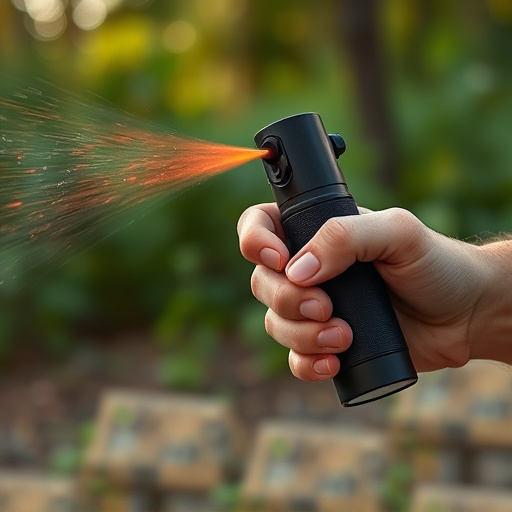Handheld pepper spray, a powerful personal defense tool, temporarily disables attackers, offering escape or help-seeking opportunities. Effective use depends on wind direction and distance. Mastering concealed carrying techniques—such as holsters, clip-ons, or integrating it into everyday items—ensures low-visibility defense in emergencies. Regular practice ensures swift access while maintaining responsible ownership. Understanding regional laws regarding pepper spray ownership and usage is crucial for legal compliance and safety.
“Uncover the power of self-defense with a handheld pepper spray unit—a compact yet potent tool for personal safety. This comprehensive guide explores the intricacies of concealed carrying techniques, ensuring you know where and how to keep it safe. From understanding its range and effectiveness to learning legal considerations and rights, this article equips you with vital knowledge on concealing pepper spray. Discover practical tips on responsible ownership and stay informed about your rights as a Pepper Spray Carrier.”
- Understanding Handheld Pepper Spray: Its Power and Limitations
- Concealed Carrying Techniques: Where and How to Keep It Safe
- Legal Considerations: Know Your Rights and Responsibilities
Understanding Handheld Pepper Spray: Its Power and Limitations
Handheld pepper spray is a powerful personal defense tool designed to incapacitate an attacker temporarily, providing users with a crucial window of opportunity to escape or seek help. It works by delivering capsaicin, the active ingredient in chili peppers, into the eyes and respiratory system, causing intense irritation, coughing, tears, and difficulty breathing. However, it’s essential to understand its limitations. Pepper spray is not a guaranteed solution for every situation, as factors like wind direction, distance, and an attacker’s resistance can significantly impact its effectiveness.
When carried concealingly, handheld pepper spray offers a discreet defense option, allowing individuals to be prepared without drawing unnecessary attention. Concealed pepper spray carrying techniques include securing the device in a dedicated holster or pocket, using clip-on attachments for belts or bags, or even integrating it into everyday items like keychains or pens. These methods ensure easy accessibility during emergencies while maintaining low visibility.
Concealed Carrying Techniques: Where and How to Keep It Safe
When it comes to concealed carrying a handheld pepper spray defense unit, understanding different techniques is vital for safety and legality. It’s crucial to keep in mind that the laws regarding self-defense tools like pepper spray vary across regions, so always check your local regulations before carrying. Popular hidden spots include inside a purse or backpack, wrapped in a protective case and tucked under clothing, or even integrated into a belt holster designed for discreet wear.
For added security, consider using specialized pockets or compartments designed for self-defense tools, which can be attached to clothing or bags. Additionally, regular practice of draw techniques ensures quick access during emergency situations. Remember, responsible ownership involves keeping the spray unit secure and out of reach of unauthorized individuals while also being able to deploy it swiftly when needed.
Legal Considerations: Know Your Rights and Responsibilities
When considering a handheld pepper spray defense unit, it’s crucial to understand the legal landscape surrounding its use and carrying techniques. Different jurisdictions have varying laws regarding the concealed carrying of pepper spray, so knowing your rights and responsibilities is essential. Familiarize yourself with the specific regulations in your area, as they can dictate where and how you can legally carry a pepper spray device, such as in your home for self-defense or while traveling in certain public spaces.
Understanding these legal considerations also involves recognizing your responsibilities. This includes being able to demonstrate reasonable suspicion or a perceived threat before using pepper spray, ensuring its secure storage and handling, and adhering to any restrictions on the type and quantity you can possess. Knowing your rights and responsibilities not only helps you stay within the law but also ensures that you use pepper spray as a last resort for self-defense in emergency situations.
Handheld pepper spray can be a powerful personal defense tool when used responsibly. By understanding its effects, learning concealed carrying techniques, and being aware of legal boundaries, individuals can effectively protect themselves in various situations. Remember, proper training and adherence to local regulations are key to ensuring the safe and lawful carrying of concealed pepper spray. Master these skills, stay informed, and be prepared – your safety could depend on it.
